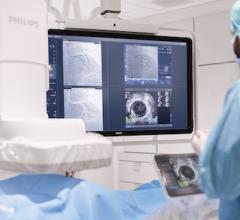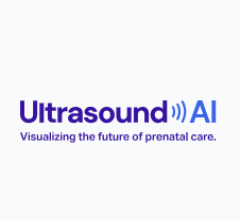
February 25, 2012 — Taking a leadership role in addressing inefficient practices and improving care, the American Society of Echocardiography (ASE) has released a list of five interventions whose appropriateness physicians and patients should discuss as part of Choosing Wisely.
Choosing Wisely is designed to promote conversations between physicians and patients about utilizing the most appropriate tests and treatments and avoiding care that may provide limited benefit. ASE has joined the ABIM Foundation and other specialty societies in this effort to help physicians provide the right care at the right time for the right patient. ASE has identified these patient care scenarios related to cardiovascular ultrasound use for particular attention:
- Do not order follow up or serial echocardiograms for surveillance after a finding of trace valvular regurgitation on an initial echocardiogram. Trace regurgitation or leakage of a heart valve on an echocardiogram (or echo) report is a common and expected finding in a large portion of normal, heart-healthy individuals. There are no symptoms or complications associated with trace amounts of regurgitation; therefore, trace regurgitation usually requires no follow-up testing. In some cases, if the doctor thinks a patient’s leakage may have gotten worse when he/she listens to their heart, they may decide to do a follow-up echocardiogram.
- Do not repeat echocardiograms in stable, asymptomatic patients with a murmur/click, where previous exam revealed no significant pathology. If patients have a murmur or a click that was heard during a previous physical examination, they do not have any symptoms that could potentially indicate that they may have a heart problem, and they already had an ultrasound of their heart (echocardiogram or echo) in the past to evaluate the same murmur or click, there is no need to repeat the echocardiogram. However, their doctor may choose to repeat the echocardiogram if the murmur or click sounds different, or they now have symptoms or complaints that are indicative of the presence of a possible heart problem and they didn’t have these symptoms at the time that the first echocardiogram was performed.
- Avoid echocardiograms for preoperative/perioperative assessment of patients with no history or symptoms of heart disease. When preparing for surgery, it is important for patients to see their doctor to make sure that their medical conditions are stable before the operation is performed. If their exam is normal and they have no symptoms of heart disease, it is not necessary to perform an echo to assess their heart function. Performing an echo on this population of people does not reduce the risks of surgery.
- Avoid using stress echocardiograms on asymptomatic patients who meet “low risk” scoring criteria for coronary disease. For patients who are not exhibiting symptoms of disease (asymptomatic), and have little history to suggest heart problems, the use of stress echo can occasionally present false exam outcomes. Stress echo is most effective when used on a patient with a known presence of risk factors for heart disease and/or symptoms suggestive of coronary artery disease as these symptoms will improve the reliability of the test result.
- Avoid transesophageal echocardiography (TEE) to detect cardiac sources of embolization, if a source has been identified and patient management will not change. Transesophageal echo provides a very good look at the inside of the heart. This procedure is very helpful when looking for clots or infection on the heart valves, both of which are dangerous because they can break off and cause a stroke or mini-stroke (TIA). In order to secure a safe reading, the patient has to be given sedative medication so the imaging device can be inserted into the esophagus. This procedure does involve a very small but real risk of damage to the patient through choking or aspiration, along with the risk of the effects from the sedative medication. For this reason, TEEs should only be used to look for the cause of a stroke or mini-stroke when the result of the test is likely to modify the treatment the patient is already being given.
The five care scenarios chosen represent situations where patient care is not efficiently enhanced by the application of cardiovascular ultrasound. However, ASE encourages patients to talk to their doctors about the safety and reliability of cardiovascular ultrasound testing for evaluating most heart and circulation concerns. From babies within the womb to the frailest of elderly patients, cardiovascular ultrasound is an appropriate test for all ages. Virtually harmless, it is the most utilized procedure in the world to safely assess heart-related conditions. ASE is committed to this effort to ensure quality care and spark discussion about the need — or lack thereof — for many frequently ordered tests or treatments.
ASE identified these interventions after careful review of evidence and clinical guidelines. In particular, ASE’s cardiovascular care experts reviewed the ACCF/ASE/AHA/ASNC/HFSA/HRS/SCAI/SCCM/SCCT/SCMR 2011 Appropriateness Use Criteria for Echocardiography (AUC), which was published in March 2011. ASE’s testing cardiovascular care scenarios were chosen based on the highest likelihood of improving patient care and reducing inappropriate test use. Leaders in the organization transformed the scenarios into plain language and produced the clinical explanations for each procedure.
ASE encourages all medical professionals engaged in cardiovascular care to read the “Five Things Physicians and Patients Should Question” and to engage their patients in conversations about reducing inappropriate tests and procedures with a goal of improving care and reducing health care costs.
For more information: www.choosingwisely.org, www.asecho.org/guidelines


 December 23, 2025
December 23, 2025 









